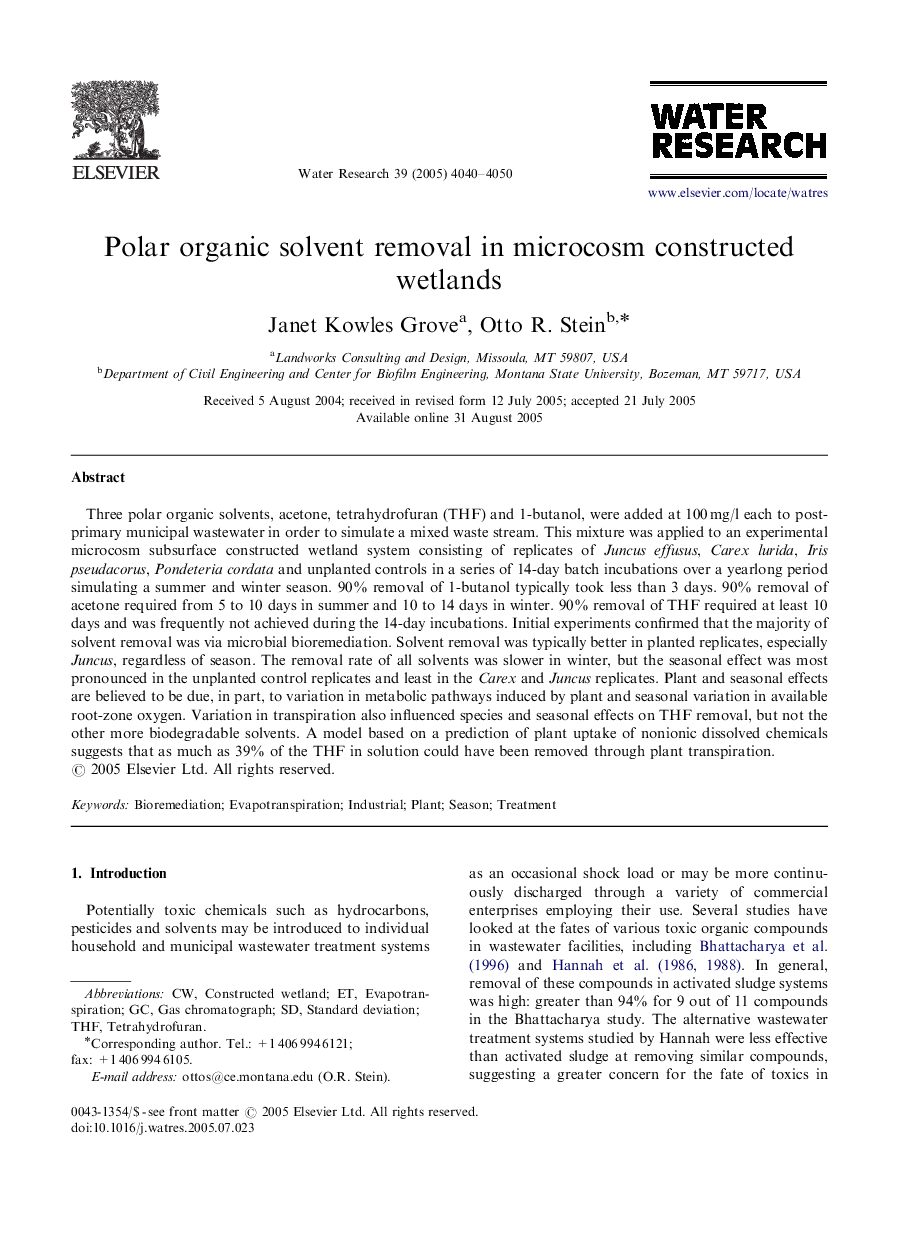| کد مقاله | کد نشریه | سال انتشار | مقاله انگلیسی | نسخه تمام متن |
|---|---|---|---|---|
| 4486186 | 1316977 | 2005 | 11 صفحه PDF | دانلود رایگان |

Three polar organic solvents, acetone, tetrahydrofuran (THF) and 1-butanol, were added at 100 mg/l each to post-primary municipal wastewater in order to simulate a mixed waste stream. This mixture was applied to an experimental microcosm subsurface constructed wetland system consisting of replicates of Juncus effusus, Carex lurida, Iris pseudacorus, Pondeteria cordata and unplanted controls in a series of 14-day batch incubations over a yearlong period simulating a summer and winter season. 90% removal of 1-butanol typically took less than 3 days. 90% removal of acetone required from 5 to 10 days in summer and 10 to 14 days in winter. 90% removal of THF required at least 10 days and was frequently not achieved during the 14-day incubations. Initial experiments confirmed that the majority of solvent removal was via microbial bioremediation. Solvent removal was typically better in planted replicates, especially Juncus, regardless of season. The removal rate of all solvents was slower in winter, but the seasonal effect was most pronounced in the unplanted control replicates and least in the Carex and Juncus replicates. Plant and seasonal effects are believed to be due, in part, to variation in metabolic pathways induced by plant and seasonal variation in available root-zone oxygen. Variation in transpiration also influenced species and seasonal effects on THF removal, but not the other more biodegradable solvents. A model based on a prediction of plant uptake of nonionic dissolved chemicals suggests that as much as 39% of the THF in solution could have been removed through plant transpiration.
Journal: Water Research - Volume 39, Issue 16, October 2005, Pages 4040–4050